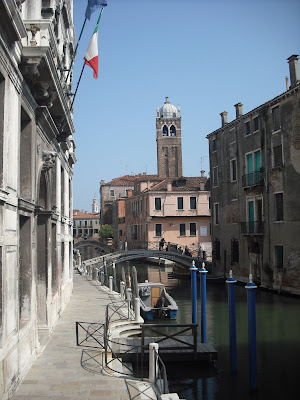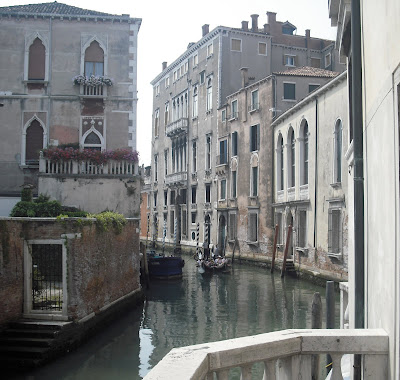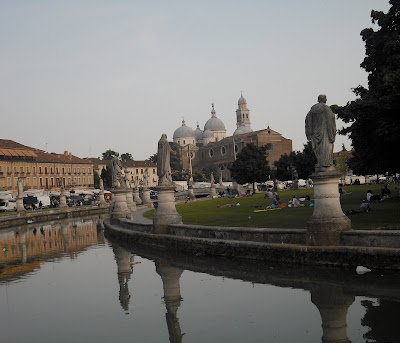




This was the weekend of my Liederabend and Liedersoirée. The first performance took place Saturday evening to a standing-room only crowd in the Festsaal of the Odilien Institut, a venue conveniently located just around the corner from the Heim. After weeks of coaching, preparations and a little anxiety, the concert came off splendidly. Each one of the twelve vocalists and three pianists under my direction did their very best. If I may pat myself on the back a bit, I have a knack for finding just the right song for each vocalist and I do know how to put together an interesting and varied program. There were a few selections that no one had heard before, in particular the Mendelssohn and Peter Cornelius duets I programmed, as well as a few Robert Franz songs. The second performance took place Sunday morning in the Meerscheinschlößl. Everyone gasped when they entered the room. I had forgotten just how beautiful this little rococo treasure is with its frescoed ceiling and grand chandelier. The second performance went even better, to an equally enthusiastic audience.
After a few days of rain it finally cleared up. I was eager to get away a bit after the late morning concert and decided to visit the town of Straßengel (which I discussed in the previous blog entry) in order to inspect its famous church. The pilgrimage church of Maria Straßengel sits on a hill in the middle of the small town. It is visible from the train when traveling north from Graz. Built in the mid-fourteenth century, the church is considered one of the best examples of High Gothic architecture in all of Austria. That may be, but in my humble opinion, the Frauenkirche on the Hauptmarkt in Nürnberg is prettier and not desecrated with the usual Baroque overlay. Still, the Straßengel church is charming and beautifully situated. In 1788 someone had the bright idea of tearing down the church and using the stones to build a school. A noble idea, but a stupid one, matching the barbarity of later ages. The local inhabitants were so incensed at the prospective loss of their pilgrimage church that they protested and petitioned the Emperor. Eventually the order was rescinded and the church stayed.
As I have noted in these pages before, Austria is unmistakably Roman Catholic. Not only are there countless churches around, but in the countryside one finds many roadside devotional altars. Most of these are dedicated to the Virgin Mary. This type of simple rustic devotion seems to me to stem from the same impulse that has existed in Europe for millennia, an expression of homage to unknown forces, the simple, naive wish that some deity out there can provide us with protection if we appeal with sufficient sincerity. Before Christianity people made their entreaties (ie. put their faith in) the imagined spirits of the forest. In pagan times, when the matriarchy predominated, the Great Mother was worshipped in many forms. The Virgin Mary is just another incarnation of the same. In effect, Christianity is the same game with a different name. There is nothing at all wrong with this, of course, but isn't it time that humanity grew out of its superstitions?













































